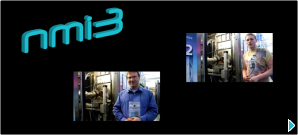Advanced Neutron Tools for Soft and Bio-Materials (WP20 - NMI3-II)
Coordinator: Annie Brulet
Overview

High precision temperature controlled sample cell for use in Soft Matter studies. Picture: Nico Grimm, HZB
Neutrons play a leading role in the study of a large variety of Soft Materials (physical chemistry or bio-inspired systems). The possibility of labelling by deuteration, absent in light or X-rays, allows to highlight the parts of interest in the multi-component systems common in soft matter.
Both the structure and dynamics of soft materials can be elucidated by Small Angle (SANS), Reflectivity (NR) and Quasi-elastic Neutron Scattering (QENS) due to the characteristic time- and length-scales probed by these techniques. These range from picoseconds to few hundred nanoseconds and from fraction of nanometers up to several hundreds nanometers.
Great advancement in our understanding of soft materials properties can be achieved by pushing forward the limits of sample preparation, the application of external stimuli and recording in-situ/in-operation experimental data.
Neutron techniques, especially neutron reflectivity, have recently offered high performance tools for the study of biological membranes. A great challenge for the future in the field is to succeed in standard production of model membranes, of recipes for specific deuteration and in the development of novel modelling methodology, including molecular scale information from MD simulations for the interpretation of neutron data.
This joint Research Activity will focus on the development of a platform for model biological membranes, soft-material-specific sample environments and in-situ devices.
Our objective is to provide a wider range of experimental tools enabling to make the best use of neutron scattering for Soft and Bio-Materials, which have many possible applications in the areas of environment, energy and health.

